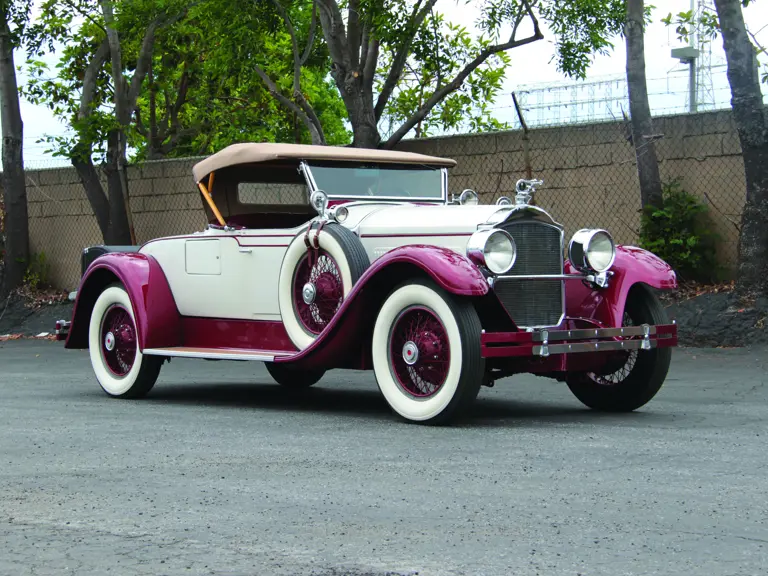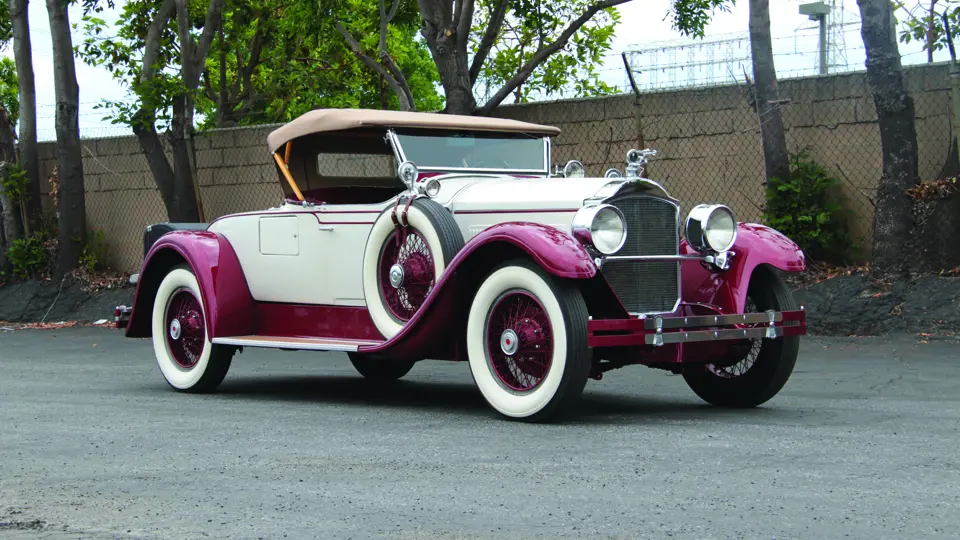By the time the Fifth Series Six was introduced in 1928, Packard was well-recognized for having characteristic lines that contributed greatly to setting the expected standards for the entire profession of automotive design. It was the result of freedom of creativity, then refined and developed over the years with grace and distinction. With exceptional engineering, Packard was, and remains one of the most admired and desired car from America’s Classic Era.
This Packard Six Runabout is a Model 533 on the longer 133-inch wheelbase chassis; Model 526 denotes the 126-inch wheelbase cars. It is reported that from the 41,750 vehicles built from the two Series, 13,414 were Model 533 chassis’ that had the choice of seven body styles.
Presented in a very nice fashion, this restored Packard looks great in its maroon and white finishes that is accented by matching maroon interior and a tan canvas convertible top. This marked the last year Packard offered a six-cylinder engine until 1937; this particular instrument was specified as being a 81 horsepower, 288.6 cubic inch engine when new from the factory. It is paired with a smooth-shifting three-speed manual transmission.
Among the many desirable features on the uncommon 533 Six Runabout is dual side-mounted spares that are fitted with Packard mirrors, rumbleseat, “golf club” door, cowllights, trunk and corresponding rack, optional wire wheels, tilt-out windshield and driver’s side spotlight. Also of prominence is the exceptional mascot that incorporates a Boyce Moto-Meter within the casting of the familiar “Goddess of Speed.” This radiator cap is seen on page 758 of Beverly Rae Kimes’ Packard: A History of the Motor Car and Company.
According to the 2017 Classic Car Club of America “Approved Classics” list, this 1928 Packard Six Runabout qualifies as a Full Classic and is eligible for their popular CARavans and well-attended gatherings. This is believed to be one of a small number of 533 Runabout Sixes that are accounted for; it will continue to impress as part of respected Packard line during a most favored era.



 | Santa Monica, California
| Santa Monica, California


